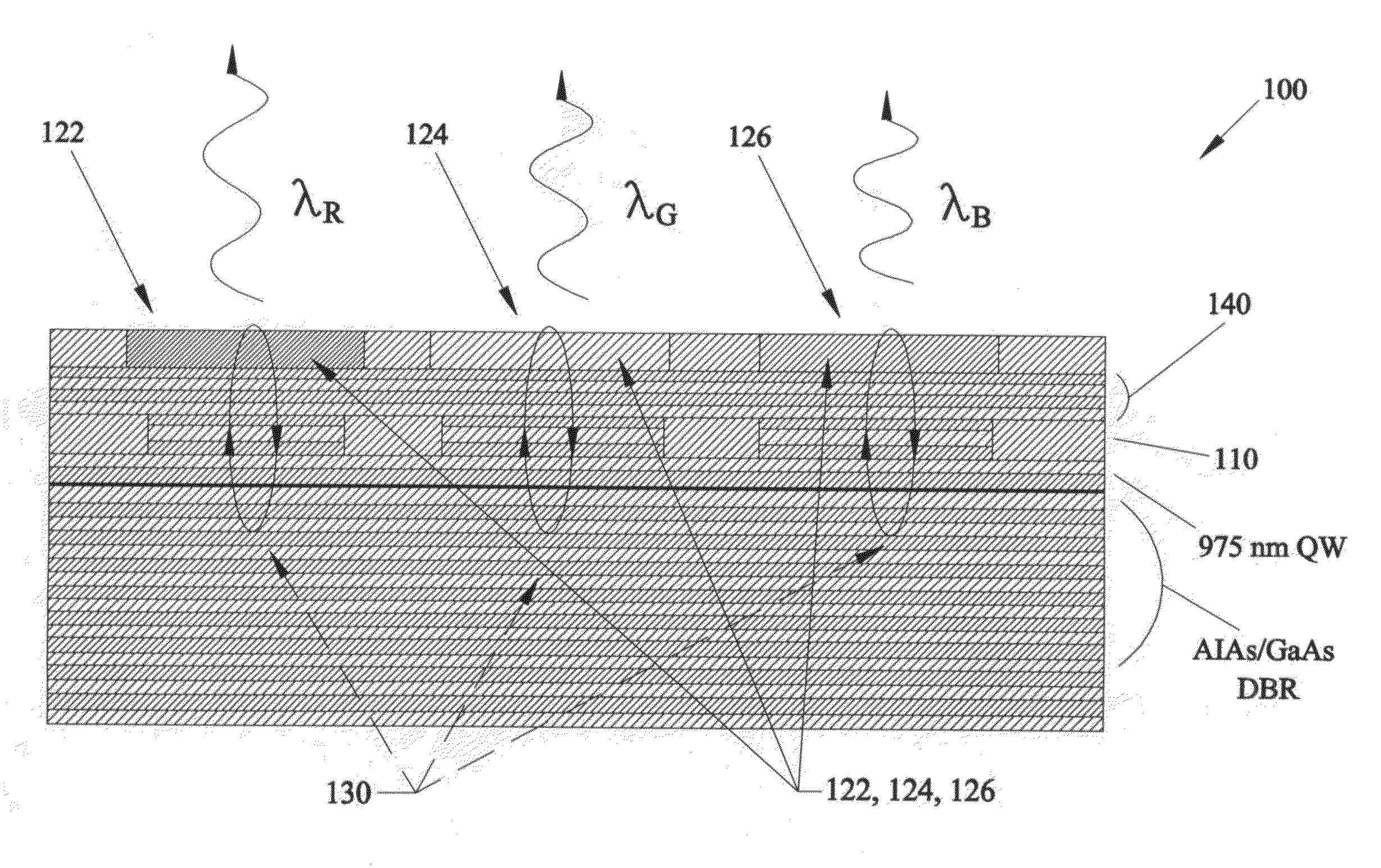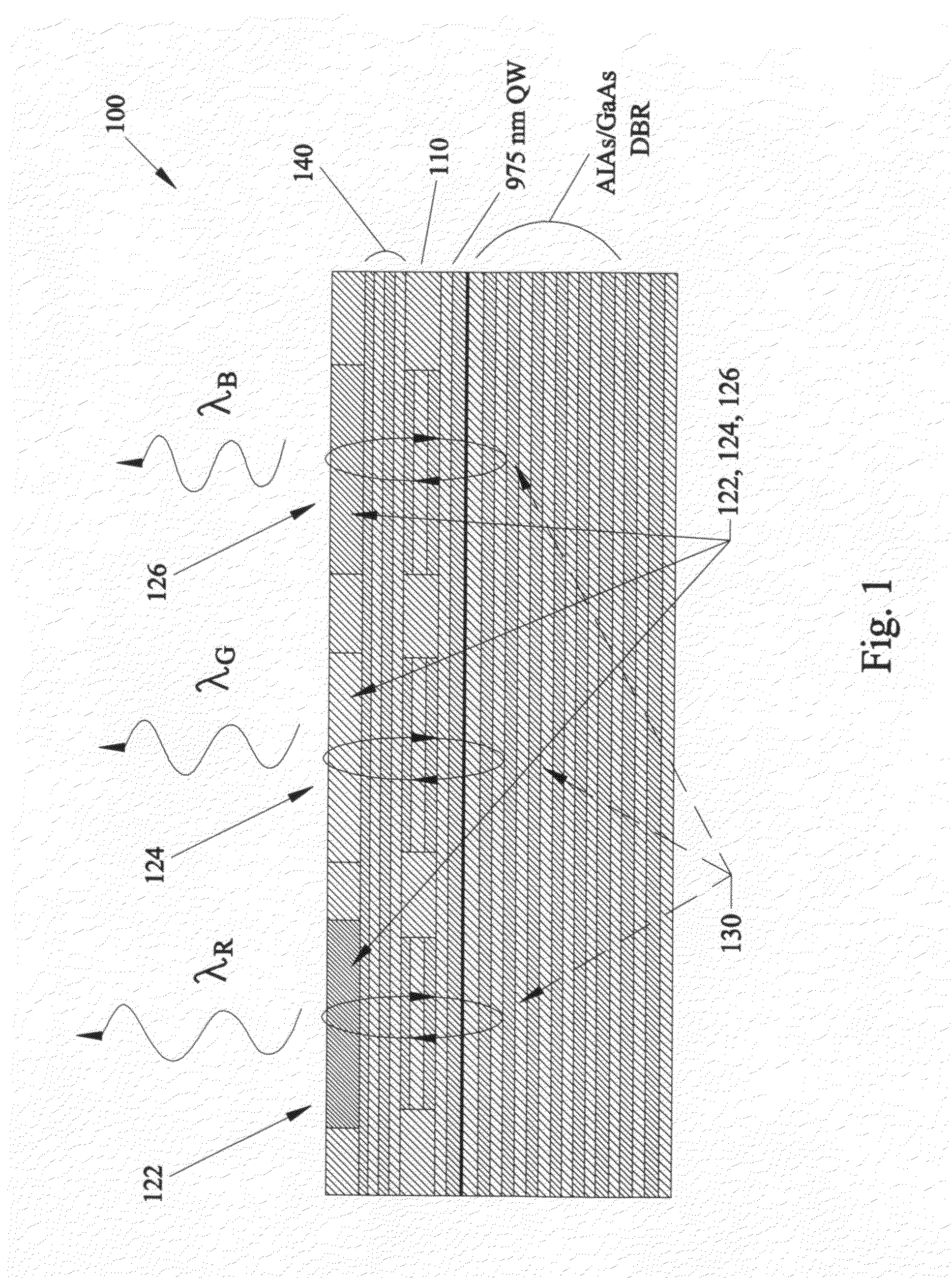Composite cavity for enhanced efficiency of up-conversion
a composite cavity and efficiency technology, applied in the field of composite cavity for enhanced efficiency of up-conversion, can solve the problems of poor contrast, difficult to view lcds in low ambient light environments, complicated manufacturing, etc., and achieve the effect of greatly improving up-conversion based displays and improving up-conversion efficiency
- Summary
- Abstract
- Description
- Claims
- Application Information
AI Technical Summary
Benefits of technology
Problems solved by technology
Method used
Image
Examples
Embodiment Construction
[0053]Before explaining the disclosed embodiments of the present invention in detail it is to be understood that the invention is not limited in its application to the details of the particular arrangements shown since the invention is capable of other embodiments. Also, the terminology used herein is for the purpose of description and not of limitation.
[0054]The following is a list of the reference numbers used in the drawings and the detailed specification to identify components:
[0055]
100RGB pixel110RCLED122red up-converter124green up-converter126blue up-converter130surface emitter140RGB mirror200UC / RCLED pixel array220RCLED300pixel322red up-converter324green up-converter326blue up-converter400pixel410column electrodes415row electrodes430column isolations435row isolations500optical system510beam splitter512green beam514red beam520absorber530beam splitter534blue beam
[0056]Prior art up-conversion patents include U.S. Pat. No. 5,089,860 issued to Deppe et al. on Feb. 18, 1992, U.S. P...
PUM
 Login to View More
Login to View More Abstract
Description
Claims
Application Information
 Login to View More
Login to View More - R&D
- Intellectual Property
- Life Sciences
- Materials
- Tech Scout
- Unparalleled Data Quality
- Higher Quality Content
- 60% Fewer Hallucinations
Browse by: Latest US Patents, China's latest patents, Technical Efficacy Thesaurus, Application Domain, Technology Topic, Popular Technical Reports.
© 2025 PatSnap. All rights reserved.Legal|Privacy policy|Modern Slavery Act Transparency Statement|Sitemap|About US| Contact US: help@patsnap.com



